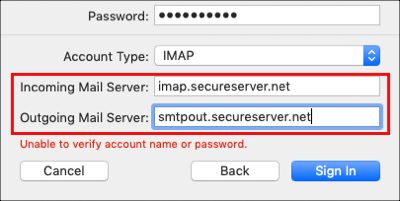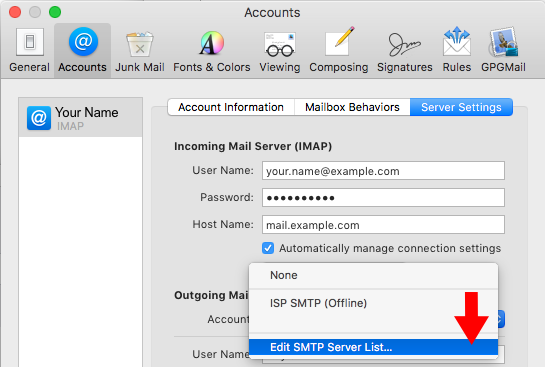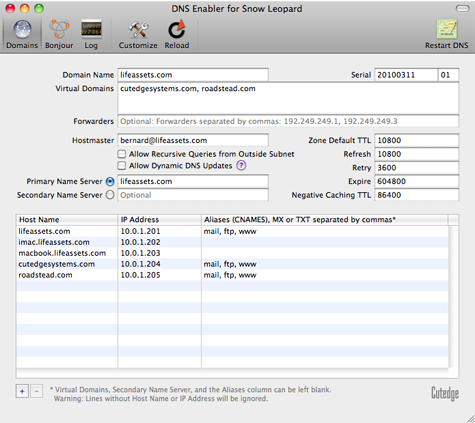

Basically, SPF, along with DKIM, DMARC, and other technologies supported by Office 365, help prevent spoofing and phishing. SPF identifies which mail servers are allowed to send mail on your behalf. What does SPF email authentication actually do? Having trouble with your SPF TXT record? Read Troubleshooting: Best practices for SPF in Office 365. It's important to note that you need to create a separate record for each subdomain as subdomains don't inherit the SPF record of their top-level domain.Ī wildcard SPF record ( *.) is required for every domain and subdomain to prevent attackers from sending email claiming to be from non-existent subdomains. Go to Create DNS records for Office 365, and then select the link for your DNS host.
#SPF MAC MAIL SERVER 10.6 UPDATE#
If an SPF TXT record exists, instead of adding a new record, you need to update the existing record. You can only have one SPF TXT record for a domain. Once you have formed your SPF TXT record, you need to update the record in DNS. If you're already deployed in Office 365 and have set up your SPF TXT records for your custom domain, and you're migrating to Office 365 Germany, you need to update your SPF TXT record. For example, if you are hosted entirely in Office 365 Germany, that is, you have no on-premises mail servers, your SPF TXT record would include rows 1, 4, and 7 and would look like this: v=spf1 include: -all However, if you bought Office 365 Germany, part of Microsoft Cloud Germany, you should use the include statement from line 4 instead of line 2. This record works for just about everyone, regardless of whether your Microsoft datacenter is located in the United States, or in Europe (including Germany), or in another location.

The example above is the most common SPF TXT record. If you haven't already done so, form your SPF TXT record by using the syntax from the table.įor example, if you are hosted entirely in Office 365, that is, you have no on-premises mail servers, your SPF TXT record would include rows 1, 2, and 7 and would look like this: v=spf1 include: -all and are the IP address and domain of the other email system that sends mail on behalf of your domain.Ĭommon. Use one of these for each additional mail system:
#SPF MAC MAIL SERVER 10.6 PLUS#
For example, Exchange Online Protection plus another email system is the domain of the third-party email system. Office 365 Germany, Microsoft Cloud Germany only All SPF TXT records start with this value Create or update your SPF TXT recordĮnsure that you're familiar with the SPF syntax in the following table.Ĭommon. In order to use a custom domain, Office 365 requires that you add a Sender Policy Framework (SPF) TXT record to your DNS record to help prevent spoofing. For detailed information about other syntax options, see SPF TXT record syntax for Office 365. For example, the company MailChimp has set up .įigure out what enforcement rule you want to use for your SPF TXT record.

Some bulk mail providers have set up subdomains to use for their customers. For example, 131.107.2.200.ĭomain names to use for all third-party domains that you need to include in your SPF TXT record. Go to your messaging server(s) and find out the External IP addresses (needed from all on-premises messaging servers). For instructions, see Gather the information you need to create Office 365 DNS records. The SPF TXT record for your custom domain, if one exists.

You need some information to make the record. The SPF TXT record for Office 365 will be made in external DNS for any custom domains or subdomains. If you don't use a custom URL (and the URL used for Office 365 ends in ), SPF has already been set up for you in the Office 365 service. GoDaddy, Bluehost, web.com) & ask for help with DNS configuration of SPF (and any other email authentication method). If you are a small business, or are unfamiliar with IP addresses or DNS configuration, call your Internet domain registrar (ex.


 0 kommentar(er)
0 kommentar(er)
